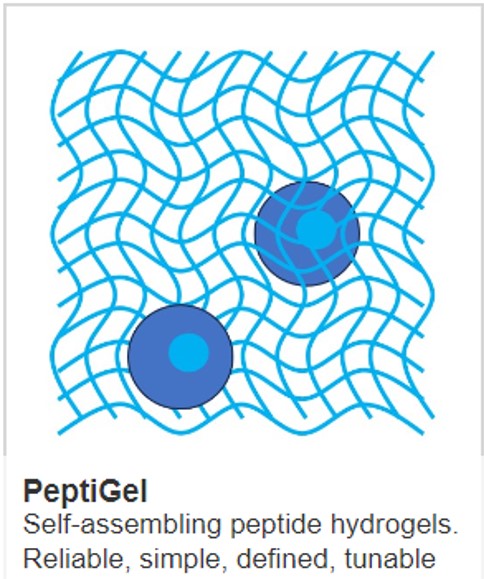A beginners guide to ADME Tox

ADME-Tox is an abbreviation for Absorption, Distribution, Metabolism, Excretion, and Toxicity, which are critical parameters in the pharmacokinetics, pharmacodynamics and toxicology of drugs. These assays are essential for understanding how a drug behaves in the body and its potential side effects. The selection of which assays are performed will depend on the basic characteristics of a drug (e.g. small molecules vs biological) and the administration method. Here are some of the most important assays used in ADME-Tox studies:
Absorption Assays
Caco-2 Permeability Assays: A cell-based assay (using Caco-2 epithelial colon cells) that predicts oral absorption by simulating the human intestinal barrier.
Parallel Artificial Membrane Permeability Assay (PAMPA): A high-throughput alternative to the Caco-2 assay using a range of cell membranes in a 96-well format to predict oral absorption.
Distribution Assays
Plasma Protein Binding Assays: Determine the extent to which drugs bind to plasma proteins, which affects their distribution and efficacy.
Blood-Brain Barrier (BBB) Permeability Models: Evaluate a drug’s ability to cross the BBB. This is crucial for central nervous system (CNS) drugs.
Metabolism Assays
Cytochrome P450 (CYP) Inhibition and Induction Assays: Assess how a drug interacts with CYP enzymes, which are key in metabolizing drugs. This helps predict drug-drug interactions and potential toxicities.
Phase II Conjugation Assays: Evaluate the drug’s metabolism through conjugation reactions, which make the drug more water-soluble for excretion.
Metabolic Stability Assays: Determine the rate at which a drug is metabolized by liver microsomes or hepatocytes, indicating its half-life in the body.
Excretion Assays
Renal Clearance Assays: Measure how well a drug is excreted through the kidneys, which is crucial for drugs, such as proteins, primarily eliminated via renal pathways.
Biliary Excretion Studies: Assess the drug’s excretion through the bile, important for understanding the enterohepatic recirculation of drugs.
Toxicity Assays
Genotoxicity Tests (e.g., Ames test, Comet assay): This is a screen for potential DNA damage that could lead to mutations and cancer.
Cytotoxicity Assays (e.g., MTT, LDH assays): Evaluate the potential toxic effects of a drug on cell viability by measuring the effect on cell proliferation.
Hepatotoxicity Assays: Assess the potential of a drug to cause liver damage, which is one of the most common reasons for drug withdrawal from the market. These assays typically use primary hepatocytes or liver microsomes, such as those offered by Cell Guidance Systems.
Cardiotoxicity Assays: Evaluate the impact of a drug on cardiac function, particularly its effect on the QT interval, which can lead to arrhythmias. Human-induced pluripotent stem cell-derived cardiomyocytes (hiPSC-CMs) are increasingly used in vitro for these assays.
In Vivo Toxicity Studies: Although not an assay per se, in vivo studies in animal models are crucial for assessing the overall toxicity profile of a drug, including its potential to cause organ damage, reproductive toxicity, and carcinogenicity.
In Vitro-In Vivo Correlation (IVIVC) Studies: These studies aim to establish a relationship between in vitro drug release and in vivo absorption. Although not an assay, IVIVC is crucial for predicting how a drug behaves in the human body based on laboratory tests.
High-Throughput Screening (HTS) for Toxicity: With the advancement in technology, HTS allows for the rapid evaluation of thousands of compounds for potential toxicity by using automated, miniaturized assays. This approach is particularly useful in the early stages of drug development to identify and eliminate compounds with undesirable ADME-Tox profiles before advancing to more costly and time-consuming studies.
Reactive Oxygen Species (ROS) Generation Assays: These assays measure the generation of ROS (a type of free radicals) as a result of drug metabolism, which can lead to oxidative stress and cellular damage. Assessing a compound’s potential to generate ROS is important for understanding its toxicity profile.
Immunoassays for Biomarker Detection: The detection of specific biomarkers associated with drug-induced injury (e.g., liver or kidney injury) can provide early indications of toxicity. Immunoassays are commonly used for this purpose due to their sensitivity and specificity.
3D Cell Culture and Organ-on-a-Chip Models: These advanced models mimic the structure and function of human organs more closely than traditional 2D cell cultures. They provide a more physiologically relevant environment for ADME-Tox studies, particularly for assessing complex interactions and long-term effects.
Computational Models and in silico Predictions: - Leveraging computational tools and databases for in silico predictions has become an integral part of ADME-Tox studies. These models can predict a compound's pharmacokinetic properties, potential toxicities, and interactions with metabolic enzymes or transporters based on its chemical structure. This approach helps in prioritizing compounds for further testing and reducing the reliance on animal studies.
Transporter Interaction Assays: Drug transporters play a crucial role in the absorption, distribution, and excretion of drugs. Assays that evaluate a drug’s interaction with key transporters (e.g., P-glycoprotein, BCRP, OATP) can provide insights into its pharmacokinetic profile and potential for drug-drug interactions.
Mitochondrial Toxicity Assays: Drugs that impair mitochondrial function can lead to various adverse effects. Assays that assess the impact of compounds on mitochondrial respiration and ATP production are important for identifying potential mitochondrial toxicants.
Apoptosis and Necrosis Assays: Understanding whether a drug induces cell death through apoptosis (programmed cell death) or necrosis (uncontrolled cell death) is important for evaluating its safety profile. Various assays are available to distinguish between these pathways and quantify cell death, including caspase activation assays for apoptosis and lactate dehydrogenase (LDH) release assays for necrosis.
Endocrine Disruption Assays: Some chemicals can interfere with the endocrine system, leading to adverse health effects. Assays that screen for potential endocrine disruptors, such as those affecting hormone receptors or hormone synthesis, are crucial for assessing the safety of drugs and chemicals.
Skin and Eye Irritation/Corrosion Tests: For topically applied drugs or those that may come into contact with the skin and eyes, it’s important to assess the potential for irritation or corrosion. In vitro models, such as reconstructed human epidermis (RHE) and bovine corneal opacity and permeability (BCOP) assays, are used alongside or as alternatives to traditional animal tests.
Developmental and Reproductive Toxicity (DART) Studies: These studies assess the potential impact of a drug on reproductive health and development, including effects on fertility, embryonic development, and postnatal development. While traditionally conducted in vivo, there is a growing interest in developing in vitro and alternative models to assess developmental and reproductive toxicity, reducing the reliance on animal testing. These include using embryonic stem cells, zebrafish embryos, and specific in vitro assays to evaluate effects on gametogenesis, hormone function, and embryonic development.
Immunotoxicity Assays: Drugs can potentially impact the immune system, leading to immunosuppression or unwanted immune responses, such as a cytokine storm. Assays to assess immunotoxicity include lymphocyte proliferation tests, cytokine release assays, and assays for assessing the impact on immune cell function.
Chemical-Specific Assays: Depending on the chemical nature and expected mechanism of action of a drug, specific assays may be developed or employed to assess particular aspects of its ADME-Tox profile. For example, for drugs expected to chelate metals, assays to assess metal binding may be important.
Integrated Multi-omics Approaches: Combining genomics, proteomics, metabolomics, and other ‘omics’ technologies provides a comprehensive understanding of the biological impact of a drug. These approaches can identify biomarkers of toxicity, elucidate mechanisms of action, and predict adverse effects by analyzing changes at multiple levels of biological organization. Integrated multi-omics analyses allow for a holistic view of how a drug interacts with biological systems, potentially uncovering unforeseen effects and pathways involved in drug metabolism and toxicity.
Microbiome Interaction Studies: The human microbiome plays a significant role in drug metabolism and can influence the efficacy and toxicity of medications. Studies assessing the impact of drugs on the composition and function of the microbiome, as well as how variations in the microbiome can affect drug response, are becoming increasingly important.
Ethical and Regulatory Considerations: While not assays per se, ethical and regulatory considerations are crucial in guiding the selection and implementation of ADME-Tox studies. This includes adherence to the principles of the 3Rs (Replacement, Reduction, and Refinement) to minimize animal use, compliance with regulatory guidelines for drug safety and efficacy, and ensuring that studies are designed to provide meaningful and reliable data for decision-making.
In summary, the field of ADME-Tox encompasses a wide range of assays and studies, each contributing valuable information about a drug’s pharmacokinetics, metabolism, and potential toxicities. The choice of assays depends on the specific characteristics of the drug, its intended therapeutic use, and regulatory requirements. Advances in technology and methodology continue to evolve the ADME-Tox landscape, offering more sophisticated, accurate, and ethical approaches to evaluating drug safety and efficacy. These advancements include the development of more complex in vitro models that better mimic human physiology, the application of computational models for predicting ADME-Tox properties, and the integration of multi-omics and microbiome studies for a more comprehensive understanding of drug effects.
As the field progresses, there is a growing emphasis on personalized medicine and understanding individual variations in drug metabolism and response. This includes studying genetic polymorphisms that affect enzyme activity, transporter function, and other factors influencing drug disposition. Personalized ADME-Tox studies aim to optimize drug therapy for individual patients, reducing the risk of adverse effects and improving therapeutic outcomes.
Furthermore, regulatory agencies worldwide are increasingly recognizing the value of innovative ADME-Tox studies and are incorporating new scientific findings into their guidelines. This evolving regulatory landscape encourages the development and adoption of novel assays and models, fostering a more predictive and efficient drug development process.
IMAGE Prescription drugs CREDIT Sharon Dawn



